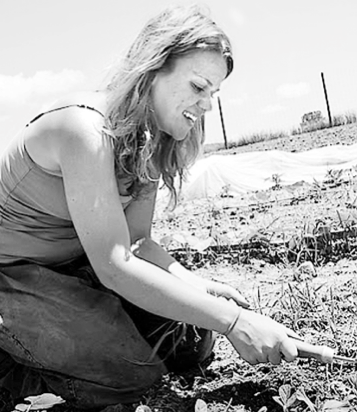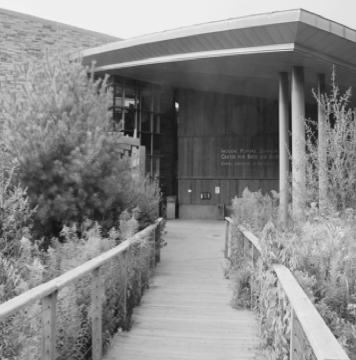Top Five Science-y Things to Do

1. Be a farmer for the afternoon at a Dilmun Hill Student Organic Farm work party.
An entirely student run, organic farm, Dilmun Hill is located on Route 366 (Dryden Road), just across from Judd Falls Road, near the Cornell Orchards. The farm practices sustainable agriculture and provides produce for places on campus like the Manndible Café.
The farm hosts weekly work-parties on Tuesdays and Thursdays from 4 to 7 p.m. and invites everyone to experience the latest in sustainable agricultural practices, support the farm, join their community and go home with fresh produce.
If visiting the farm seems like a bit of a journey, visit Dilmun Hill’s on-campus farm stand on Wednesdays from 3 to 5 in front of Mann Library (on the Ag Quad) and inside the library lobby on rainy days. They will also be at the Farmers’ Market at Cornell this fall on Thursdays between 11 and 3.
Market Garden Manager Isaac Arginteanu ’12 said, “I started out knowing nothing about agriculture and farming and now I’m a manager. It was my introduction to something I’ve become very passionate about.”
2. Check out the 200,000 species in the Cornell University Insect Collection.
The Cornell University Insect Collection includes more than seven million insect specimens representing about 200,000 species, or roughly 20 percent of the world’s described insect fauna. The collection is housed in approximately 16,500 drawers held within in a climate-controlled facility located on the second floor of Comstock Hall on Cornell’s central campus.
Because it is a research facility, visits to the CUIC are limited and need to be planned in advance. Prospective visitors or students interested in conducting research at the facility should contact curator Prof. James Liebherr at [email protected].
The CUIC also participates in the annual Insectapalooza celebration — a one-day insect fair with educational exhibits for all age groups, from children to adults. Insectapalooza typically takes place at the end of October.
3. Check out the world’s largest particle accelerator, the Synchrotron.
Slightly larger than a football field, the Cornell High Energy Synchrotron Source has a 768-meter circumference and the capability to send electrons and positrons flying at 99.9999995 percent of the speed of light.
CHESS provides state-of-the-art synchrotron radiation facilities for research in physics, chemistry, biology and environmental and materials sciences, and attracts over 1,000 scientists, graduate and undergraduate students each year.
Researchers at CHESS always welcome student volunteers to participate in research and experiments, and even tour the facility on Tuesdays throughout the year. CHESS is located in Wilson laboratory on Route 366 & Pine Tree Road.
4. Go stargazing at the Fuertes Observatory.
Fuertes Observatory is located on North Campus near Helen Newman Hall. The observatory houses several small telescopes, and a larger, 12-inch refractor telescope with a mechanical tracking mechanism that is operated by weights, like a grandfather clock.
Though the observatory is no longer used for research purposes, it is used for introductory astronomy classes and is open to the public.
The Cornell Astronomical Society runs public viewing nights at the Fuertes Observatory on every clear Friday night during the semester from 8:00 p.m. until midnight, if sky conditions permit.

5. Take a midnight trip to the Lab of Ornithology’s sanctuary.
Founded in 1915, the Cornell Lab of Ornithology is a world leader in the study, appreciation and conservation of birds.
The lab is located in Sapsucker Woods and offers regular guided tours and trail walks through Sapsucker Woods Sanctuary. The Johnson Visitor Center at the lab is home to a large observatory with chairs, telescopes and bird feeders, interactive exhibits, a world-class collection of bird art and sculpture and the Macaulay library — the world’s largest archive of animal sounds and video. The lab’s Adelson Library, which is open to the public, offers more than 14,000 books and serials on birds and natural history.
Admission is free, and the visitor center is open 10 a.m. to 4 p.m., Monday to Sunday. The sanctuary, however, is open every day from dawn to dusk.
